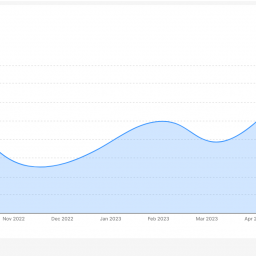Want to Increase Employee Productivity? Start by Defining It
Productivity is a key factor in the success of any organization. Employers are always looking for ways to improve productivity and maximize the output of their employees. However, before implementing strategies and initiatives to boost productivity, it is crucial to have a clear understanding of what productivity means in your specific context. By defining productivity in a meaningful and measurable way, employers can align their efforts with the desired outcomes and create an environment that supports high performance. In this article, we will discuss the importance of defining productivity and provide steps to establish a productivity framework within your organization.
Why Define Productivity?
Defining productivity provides clarity and direction for both employers and employees. It helps set realistic goals, enables effective performance evaluation, and promotes a culture of accountability. When productivity is clearly defined, employees understand what is expected of them and can align their efforts accordingly. It also allows employers to identify and address any barriers or inefficiencies that hinder productivity, leading to improved overall performance.
Steps to Define Productivity:
1. Identify Key Performance Indicators (KPIs):
Start by identifying the key metrics that are directly tied to the success of your organization or department. These KPIs should align with your strategic goals and reflect the specific outcomes you want to achieve. For example, KPIs could include sales targets, customer satisfaction ratings, project deadlines, or production quotas.
2. Establish Clear Objectives:
Once you have identified the KPIs, establish clear objectives that define what success looks like for each metric. Objectives should be specific, measurable, achievable, relevant, and time-bound (SMART). For instance, an objective could be to increase sales revenue by 10% within the next quarter or reduce customer response time to under 24 hours.
3. Define Performance Expectations:
Communicate performance expectations to employees, ensuring they understand how their work contributes to overall productivity. Clearly outline the desired outcomes, quality standards, and the level of effort required. This helps employees prioritize their tasks and focus on activities that directly impact productivity.
4. Provide Resources and Support:
To increase productivity, employees need access to the necessary resources, tools, and training. Identify any gaps or barriers that may impede productivity and address them proactively. Offer training programs, invest in technology, and provide ongoing support to help employees perform their tasks efficiently.
5. Foster a Positive Work Environment:
A positive work environment plays a crucial role in productivity. Create a culture that values and rewards hard work, collaboration, and innovation. Encourage open communication, provide regular feedback, and recognize and appreciate employee contributions. A supportive and engaging work environment can significantly boost motivation and productivity.
6. Regularly Monitor and Evaluate Performance:
Establish a system for monitoring and evaluating performance against the defined productivity metrics. Set up regular check-ins, performance reviews, or team meetings to assess progress and provide feedback. This allows for course correction, identification of best practices, and continuous improvement.
7. Continuously Improve and Adapt:
Productivity is not a static concept. It evolves over time as the organization and industry dynamics change. Continuously evaluate your productivity framework, gather feedback from employees, and adapt your strategies accordingly. Embrace new technologies, methodologies, and best practices to stay ahead of the curve.
Conclusion:
Defining productivity is a critical step in enhancing employee performance and organizational success. By clearly identifying key metrics, establishing objectives, communicating expectations, and providing necessary resources and support, employers can create a culture of productivity and maximize employee potential. Regular monitoring and evaluation allow for continuous improvement, ensuring that productivity remains a focus in the ever-changing business landscape. Remember, productivity is not just about doing more—it’s about doing the right things that drive meaningful results.
















